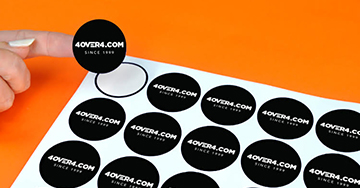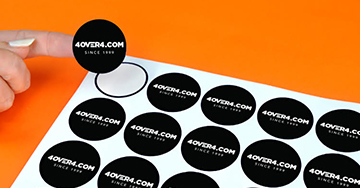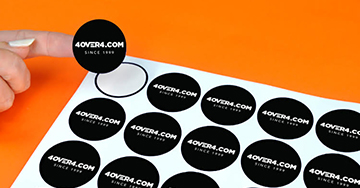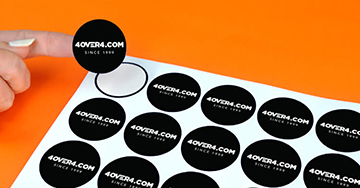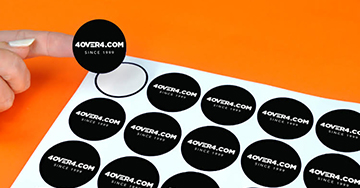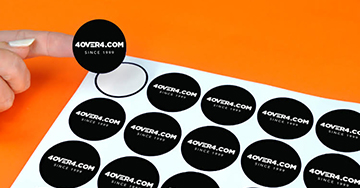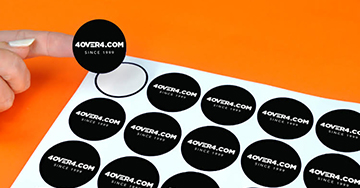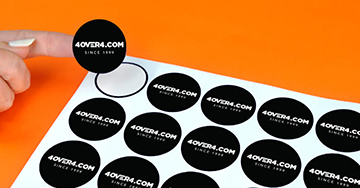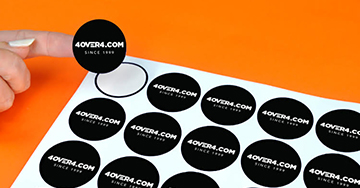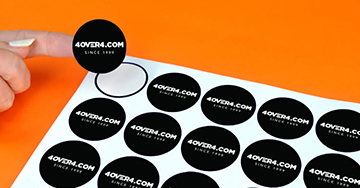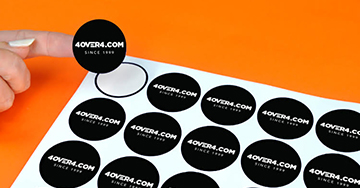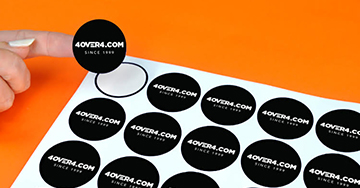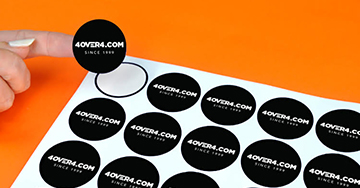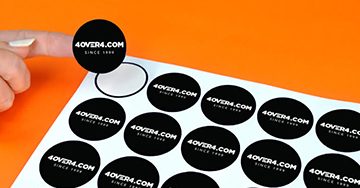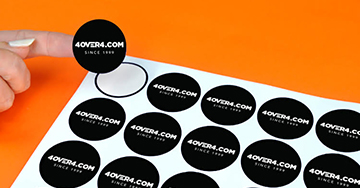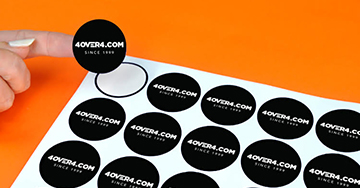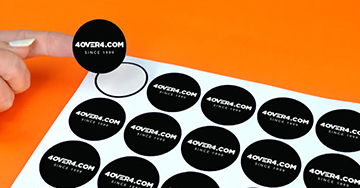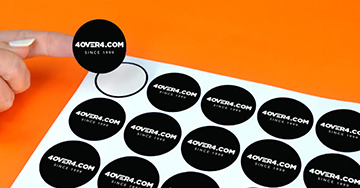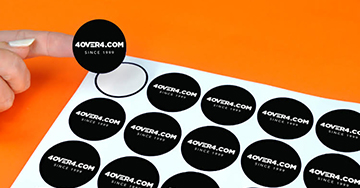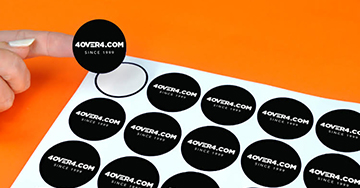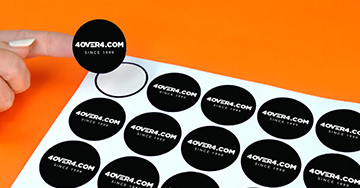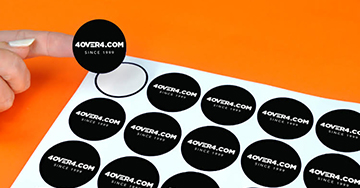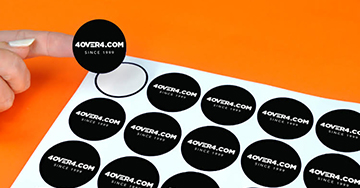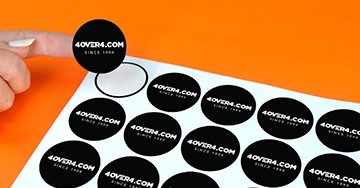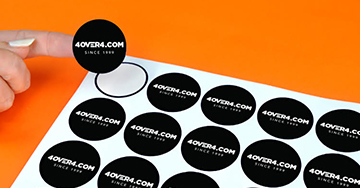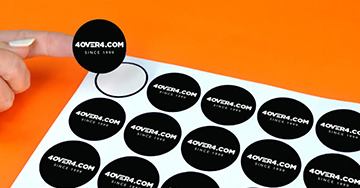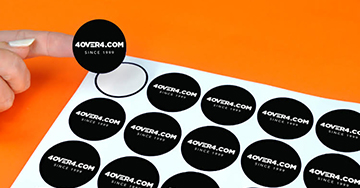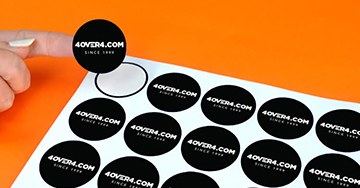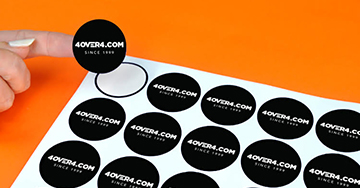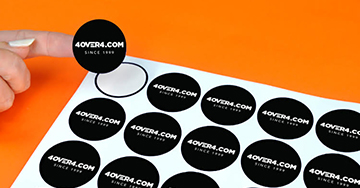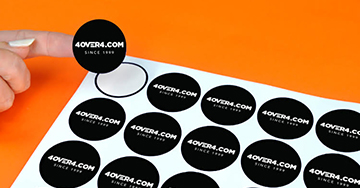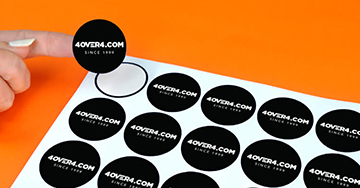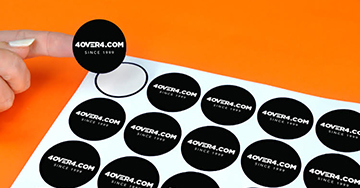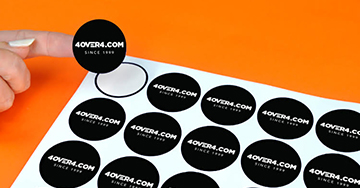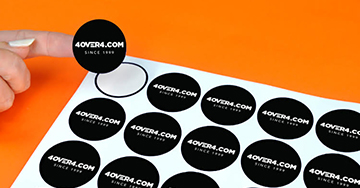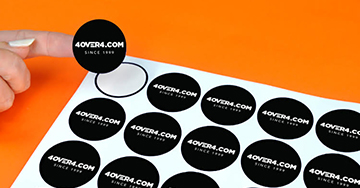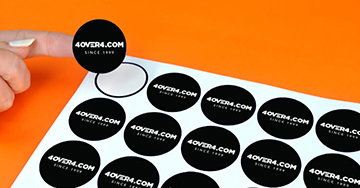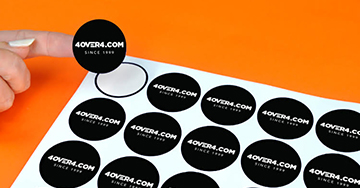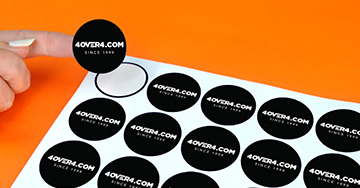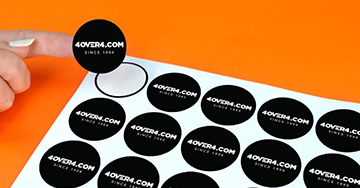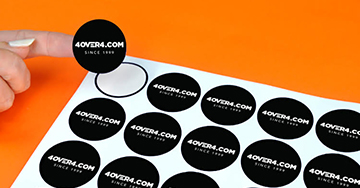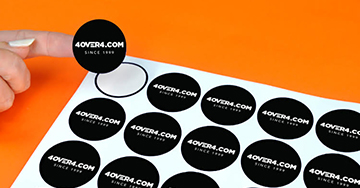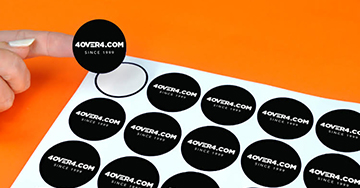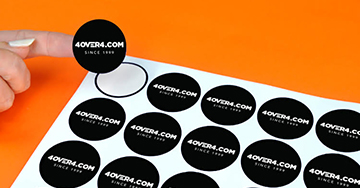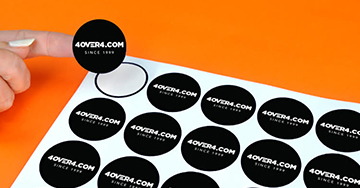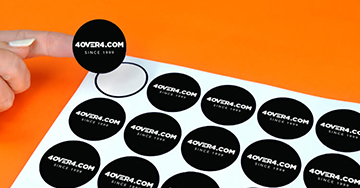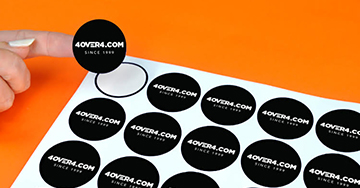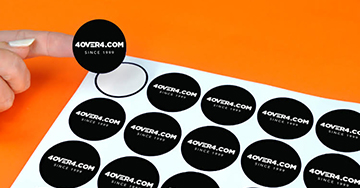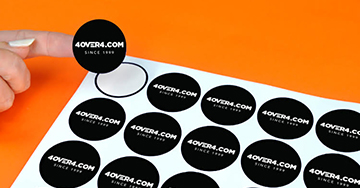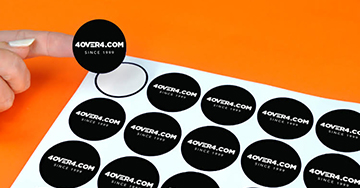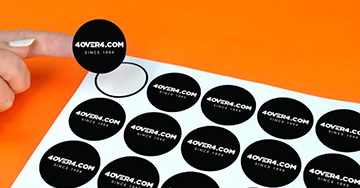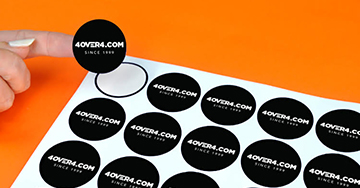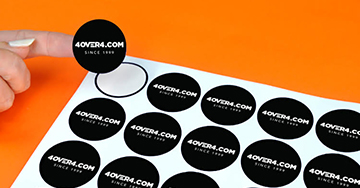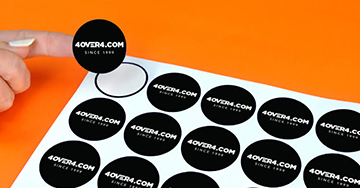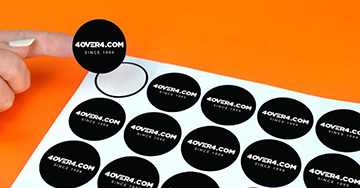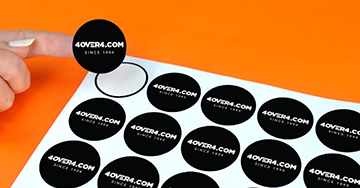TABLE OF CONTENTS
Key Takeaways
-
Versatile and Durable: Vinyl stickers are known for their versatility and durability, making them suitable for various applications both indoors and outdoors.
-
Multiple Types: There are different types of vinyl stickers, including permanent, removable, and repositionable, catering to diverse needs.
-
Wide Range of Uses: These stickers can be used for branding, decoration, labeling, and personal expression on various surfaces like cars, laptops, and walls.
-
Design Flexibility: Effective design tips include using high-resolution images and considering the sticker's shape and size to ensure a professional look.
-
Printing Options: Various printing methods such as digital printing and screen printing offer quality results; choose based on your budget and requirements.
-
Easy Application and Maintenance: Applying vinyl stickers is straightforward with proper techniques, and they are easy to care for and remove without leaving residue.
Understanding Vinyl Stickers
What Are Vinyl Stickers
Vinyl stickers are adhesive labels made from durable vinyl material. They are versatile and used in various applications. People use them for home decor, car decals, branding.
These stickers come in different finishes. You can find them in matte, glossy, and transparent options. Each finish offers a unique look and feel.
History of Vinyl Stickers
Vinyl stickers originated in the mid-20th century. The 1940s saw the first use of vinyl as a material for creative stickers and custom brand stickers. Printing technology evolved over time, enhancing sticker quality.
By the 1970s, vinyl stickers became popular due to their affordability. Customization options also increased their appeal. Today, they remain a favorite for personal and business use.
Benefits of Vinyl Stickers
Vinyl stickers offer several benefits. They are highly durable and resistant to water and UV rays. This makes them suitable for outdoor use.
They are easy to apply and remove without leaving residue. This feature is convenient for temporary uses like promotions or seasonal decor.
Vinyl stickers are cost-effective. Both individuals and businesses find them affordable for various purposes. From marketing campaigns to personal projects, they provide excellent value. Allow 4OVER4.COM to help you make your own vinyl stickers suitable for your brand.
Types of Vinyl Stickers
Permanent Vinyl Stickers
These stickers have a strong adhesive. They ensure long-lasting application. Suitable for outdoor use, they resist weather conditions. It is commonly used in signage, vehicle decals, custom vinyl stickers for walls, and business logo stickers. They withstand rain, sun, and wind.
Permanent vinyl stickers are ideal for businesses. They need durable solutions for branding. Their resilience makes them reliable for long-term displays.
Removable Vinyl Stickers
Removable vinyl stickers feature temporary adhesive. This allows for easy removal without residue. Ideal for temporary promotions and seasonal decor like the storefront window decals, which can be changed frequently.
They can be repositioned multiple times. They do not lose adhesive strength. This makes them perfect for events and short-term campaigns.
Transparent Vinyl Stickers
Transparent vinyl stickers blend seamlessly with surfaces. They create a "painted-on" look, especially on windows and glass. Popular in minimalist designs, they offer a sleek appearance.
These stickers are often used in storefronts. They provide subtle branding without obstructing the view. Their clear nature makes them versatile for various applications.
Reflective Vinyl Stickers
Reflective vinyl stickers reflect light, enhancing visibility. Commonly used in safety signs and nighttime advertising, they improve recognition in low-light conditions.
These stickers are essential for road signs and emergency vehicles. Their reflective quality ensures safety by making important information visible at night.
Uses of Vinyl Stickers
Home Decor Applications
Vinyl stickers are great for wall art. They can transform a plain wall into a stunning feature. Custom decals add a personal touch to any room.
People use vinyl stickers to personalize furniture and appliances. A simple sticker can make old furniture look new. It adds character to everyday items.
DIY home improvement projects benefit from vinyl stickers. They are easy to apply and remove. This makes them perfect for renters or anyone wanting a quick change.
Business Branding Uses
Businesses use vinyl stickers for branded merchandise and packaging. They help products stand out on shelves. Custom stickers can make packaging more appealing.
Storefront displays often feature vinyl stickers. They attract customers with eye-catching designs. Window graphics are especially popular in retail stores.
Events and trade shows rely on vinyl stickers for brand visibility. Companies use them on banners and signs. This helps draw attention to their booths.
Promotional Campaigns
Vinyl stickers are common in giveaways and promotional merchandise. They are cost-effective and easy to distribute. This makes them ideal for reaching a large audience.
Guerrilla marketing strategies often include vinyl stickers. Businesses place storefront window graphics in high-traffic areas for maximum exposure. This creates buzz around their brand.
Increasing brand recognition, like product labels for small businesses and window clings for businesses is another key use of vinyl stickers. They engage customers through creative designs. Stickers can turn casual observers into loyal fans.
Personal Projects
Many people use vinyl stickers to customize laptops, phones, and notebooks, as well as window clings for business. These items become unique and reflect personal style.
Scrapbooking and crafting enthusiasts love vinyl stickers. They add flair to projects without much effort. Craft stores offer many designs specifically for these hobbies.
Personalizing gifts and party favors is easy with vinyl stickers. Adding a name or special message makes the item more meaningful. It shows thoughtfulness in gift-giving.
Design Tips for Vinyl Stickers
Choosing Colors and Fonts
Select colors that align with your message. Bright colors work well for fun, playful stickers. Muted tones suit more serious messages. Always consider your audience when choosing colors.
Readability is crucial when picking fonts. Simple, clean fonts are easier to read. Avoid overly decorative fonts that can be hard to decipher.
Use contrasting colors for better visibility. Light text on a dark background or dark text on a light background works best.
Creating Eye-Catching Designs
Simplicity and clarity are key in design. Too many elements can clutter the sticker and make it hard to understand.
Bold graphics and striking visuals grab attention. Use high-quality images and bold lines to make your design stand out.
Unique shapes and die-cuts can attract more attention. Custom shapes make your sticker memorable and unique.
Using Design Software
Adobe Illustrator and CorelDRAW are popular choices for designing vinyl stickers. These programs offer powerful tools for creating detailed designs.
Vector graphics are important for scalability. They ensure your design looks sharp at any size. This is crucial for maintaining quality in different applications.
Templates and design tools can help beginners. Many software programs offer templates that simplify the design process.
Common Design Mistakes
Avoid overcrowding the design with too much text or images. A cluttered design can be overwhelming and hard to read.
Proper alignment and spacing are essential. Misaligned elements can make your sticker look unprofessional.
Low-resolution images can appear pixelated when printed. Always use high-resolution images to ensure a clear, crisp print.
Printing Methods for Vinyl Stickers
Digital Printing
Digital printing is used for producing high-quality, full-color stickers and custom printed packaging tape. This method allows for precise color matching and intricate designs. It's ideal for small to medium print runs.
This method is cost-effective because it doesn't require plates or setup fees. Small businesses often choose digital printing due to its affordability.
Another advantage is the quick turnaround time. Orders can be completed in a matter of days. Traditional methods usually take longer, but digital printing speeds up the process.
Screen Printing
Screen printing is suitable for large quantities and simple designs. It involves pushing ink through a mesh screen onto the vinyl material for table sticker cover and magnet printing services. This technique ensures even coverage and sharp lines.
One of the main benefits is the production of vibrant, long-lasting colors. The inks used are typically thicker, which makes the colors pop. Outdoor stickers benefit from this durability.
For bulk orders, screen printing becomes very cost-effective. The initial setup might be higher, but the cost per unit decreases significantly with larger quantities.
Offset Printing
Offset printing is used for large-scale production with consistent quality. It transfers ink from a plate to a rubber blanket, then onto the vinyl table sticker cover. This method ensures uniformity across all stickers.
It can handle complex designs with fine details. High-resolution images and intricate patterns come out crisp and clear. This makes it an excellent choice for detailed artwork.
Offset printing is also cost-effective for high-volume orders. The more you print, the lower the cost when you make your own vinyl stickers or use magnet printing services. This makes it ideal for large campaigns or events.
Applying Vinyl Stickers
Surface Preparation
Clean the surface thoroughly before applying vinyl stickers. Use a mild detergent and water to remove dirt and debris. Ensure the surface is completely dry and smooth to avoid any adhesion issues.
Rubbing alcohol is excellent for removing grease and residue. Apply it with a clean cloth and let it dry. This step ensures better sticker adhesion.
Application Techniques
Use a squeegee to smooth out bubbles during application. Start from one edge of the sticker and work your way across. This method helps in reducing air pockets.
Apply even pressure while using the squeegee. This ensures the sticker adheres properly to the surface. Working slowly and carefully can prevent mistakes.
Tools Needed
Several tools are essential for applying vinyl stickers:
-
Squeegee
-
Ruler
-
Cutting knife
Masking tape helps in positioning the sticker correctly. Place it on the edges to hold the sticker in place before final application.
A clean workspace is crucial for a successful application. Dust and debris can interfere with adhesion, so keep your area tidy.
Caring for Vinyl Stickers
Cleaning Tips
Use mild soap and water to clean vinyl stickers. This helps avoid damage. Avoid abrasive cleaners. They can scratch the surface.
Dry the sticker thoroughly after cleaning. This prevents water spots and keeps the adhesive strong.
Avoiding Damage
Keep sharp objects away from the edges of vinyl stickers. These can peel or cut the sticker.
Avoid exposing vinyl stickers to extreme temperatures. Heat can cause them to warp, while cold can make them brittle.
Handle stickers gently during cleaning. Rough handling can tear or stretch the material.
Long-Term Maintenance
Clean vinyl stickers periodically to maintain their appearance. Dust and dirt can dull their look over time.
Inspect the stickers regularly for any lifting edges. Reapply them if necessary to ensure they stay in place.
Protect vinyl stickers from prolonged sun exposure. UV rays can fade colors and weaken the adhesive.
Removing Vinyl Stickers Safely
Required Tools
Removing vinyl stickers requires specific tools. A heat gun helps to loosen stubborn stickers. It softens the adhesive, making removal easier.
Adhesive remover cleans any sticky residue left behind. This ensures the surface is clean for new applications.
Safety gloves and goggles are important. They protect your hands and eyes from chemicals and sharp edges.
Step-by-Step Process
Start by preparing the surface. Clean it with soap and water to remove dirt. Dry it completely before proceeding.
Next, use a heat gun on low setting. Hold it a few inches away from the sticker. Move it back and forth to evenly heat the sticker.
Once the sticker is warm, peel it off slowly. Use a plastic scraper if needed. Avoid using metal tools that can scratch the surface.
After removing the sticker, apply adhesive remover to a cloth. Wipe the area gently to remove any leftover adhesive.
Measure and mark positions for any new stickers. This ensures they are placed correctly.
Smooth out bubbles with a squeegee or credit card. Press firmly to ensure even adhesion.
Avoiding Surface Damage
Avoid using harsh chemicals like acetone. These can damage surfaces such as paint or plastic.
Test a small area before full application of any product. This helps to check for any adverse reactions.
Use gentle techniques for removal. Excessive force can cause scratches or other damage.
Vinyl vs Regular Stickers
Material Differences
Vinyl stickers are made from polyvinyl chloride (PVC). This makes them more durable than paper or polyester stickers, offering waterproof label benefits. Paper stickers tear easily and don't last long. Polyester is stronger than paper but not as flexible as vinyl.
Vinyl is both durable and flexible. It can stretch and bend without tearing. This makes it perfect for surfaces that aren't flat. Vinyl stickers are also waterproof. You can use them outdoors without worrying about rain or moisture. They are UV-resistant too. This means they won't fade quickly in the sun.
Durability Comparison
Permanent vinyl stickers can last up to 5-7 years. Removable vinyl stickers have a shorter lifespan, usually around 1-3 years. Environmental factors like heat, cold, and humidity affect their durability. In harsh conditions, even permanent vinyl may wear out faster.
Laminated vinyl provides extra protection. A clear layer on top shields the custom brand stickers and creative stickers from scratches and fading. Laminated vinyl stickers can handle rough use better than non-laminated ones.
Use Cases
Vinyl stickers are popular in many areas. Automotive decals and bumper stickers are common uses. They stick well to car surfaces and withstand weather changes. Custom labels and packaging also benefit from vinyl. These stickers add a professional touch to products.
Event decorations often use vinyl stickers for signage and themes. They can be applied to walls, floors, and windows without damage. Vinyl's versatility makes it ideal for temporary setups.
Related Industries
Browse our related industries
Discover this detailed guide on creating Entertainment Stickers for Art Entertainment; enhance your creative projects with valuable printing insights.
Dive into our guide on crafting stunning Automotive Stickers for the Automotive Transportation industry, packed with insights for your printing needs!
Discover how Financial Stickers can elevate marketing strategies in Financial Services with our informative guide on creating effective, customized print solutions.
Discover our detailed guide on Food Stickers for Food Beverage, perfect for learning practical tips to enhance your product branding and packaging.
Discover essential insights on designing Healthcare Stickers for Medical Healthcare environments in our informative guide, perfect for enhancing your facility's needs.
Discover how Retail Stickers can enhance your Retail Sales strategies with our informative guide, offering expert insights and practical tips to boost your business!
Create captivating Travel Stickers with our guide, ideal for any Travel Agency seeking unique branding ideas to enhance their clients' travel experiences.
Discover how Corporate Stickers can enhance brand identity in Corporate Industry settings with our guide and tap into valuable insights for effective printing.
Related Alternatives
Browse our related alternatives
Discover why 4OVER4.COM Stickers stand out from Vistaprint with quick delivery, vibrant prints, and eco options that make your branding pop.
Choose 4OVER4.COM Stickers over 48Hourprint for faster turnaround, high-quality prints, and top customer service to ensure your stickers stand out every time.
4OVER4.COM Stickers beat Printplace with top quality, vibrant prints and eco-friendly options that standout compared to the typical Printplace Stickers offering.
4OVER4.COM Stickers are a superior option to Moo with unbeatable quality, competitive rates, and custom features that set them apart as the Moo Stickers alternative.
Discover why 4OVER4.COM Stickers give you quality and value compared to Nextdayflyers with better durability, vibrant colors, and versatile customizing options.
4OVER4.COM Stickers offer better quality and customization than Smartpress Stickers alternative, ensuring vibrant design and lasting material for every project need.
Discover why 4OVER4.COM's Stickers are the preferred choice over Printrunner's alternatives with superior quality, vibrant colors, and fast service.
4OVER4.COM Stickers are a better Gotprint Stickers alternative offering vibrant designs, quicker service and eco-friendly materials than Gotprint.
Related Location
Browse our related location
Find top-quality stickers in Orlando with quick delivery and customization options to meet all your personal and business branding needs today.
Shop unique and custom stickers in Las Vegas and enhance your personal or business style with vibrant designs that make a statement in every setting!
Discover the best Phoenix Stickers for any occasion, with a variety of designs and local options that bring your ideas to life right here in Phoenix.
Shop local for vibrant Tampa Stickers and find great deals for all your needs at 4OVER4.COM, offering fast service and quality designs perfect for your projects.
Find the best Indianapolis Stickers to add a creative touch to your projects—explore top local options today and enhance your brand's personality!
Find the best Stickers in Kansas City for your business needs; enjoy quick service, unique designs, and exceptional quality that stands out locally.
Shop top-quality Philadelphia Stickers to elevate your local branding; explore diverse options with fast delivery for all your design needs today!
Discover unique and vibrant Chicago Stickers perfect for any occasion; browse local options and add a touch of Chicago flair to your collection today!
